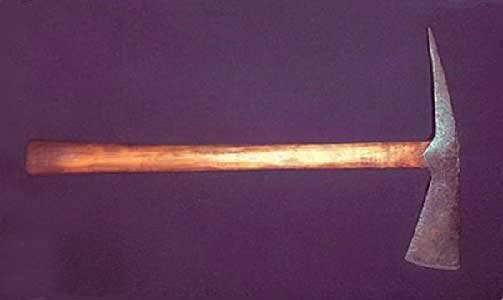If the head is an original, its of museum quality, and worth a lot of money. You might contact State museums and track down someone who is knowledgeable in this area of study, to do an appraisal. He/she will be probably thrilled just to see and hold such an antique! Such state owned museums often are asked to appraise items so that the owners can insure them properly. They either charge no fee, or a nominal one. They will want your name and address, and possibly a photo of the axe to keep. And, if you ever want to sell it, they often will want to be given the right to make the first bid, or have first right of refusal. If your estate is large enough, they will be all over you seeking to get you to donate the axe for their collection, so you can have a tax deduction.
A friend of mine bought a collection of rifles that came out of a small museum in Upstate New York, years ago, and carefully wrapped them in oil paper, and put them in a crate for storage. It moved from attic to attic over the years as his family grew, and finally left the house. His wife got after him a few years ago, to clean out the attic, and he found that crate again. He opened it this time,and was amazed at the quality of the rifles he had owned all these years. A couple of them have now been donated to the national Firearm's Museum at the NRA building in Fairfax, VA. One was an original 1873 .44-40 rifle issued to the Indian Police in Oklahoma[terr.], and so marked, with original brass tacks in the stock, which were common decorations on Indian owned guns. It was well used, but its history and " Provenance" gave it an enhanced value to any collection. He also had a full-stock 1873 Winchester .44-40 rifle in near new condition!
Good luck with that terrific find. :hatsoff:
 [/img]
[/img]
 [/img]
[/img]






